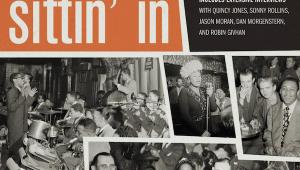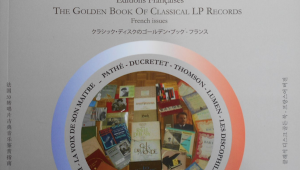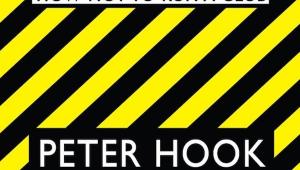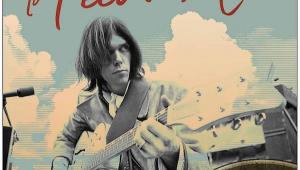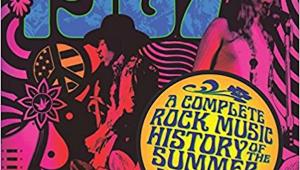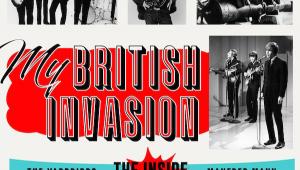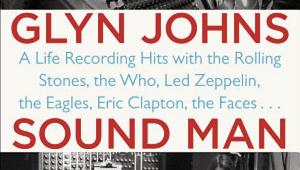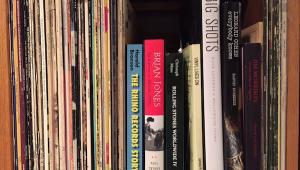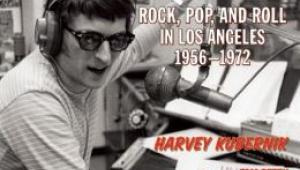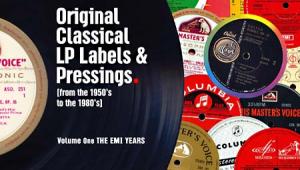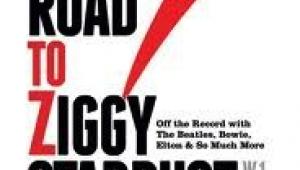Fanciful, Factual Fables Highlight Music Lover's Book
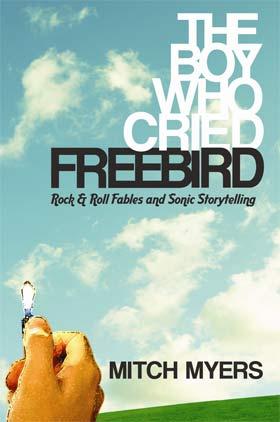
“Body snatching” aliens invade earth and disappear among the populace. Someone discovers that playing Black Sabbath’s song “Paranoid” causes the aliens to melt. It’s mankind’s only hope for survival. But not any version of “Paranoid” works: only pure analog ones do—either on vinyl or tape. Used copies become scarce. Turntable sales rise…
From that premise author Mitch Myers conjures up detailed and often hilarious scenarios, capping the vignette with a surprise ending sure to elicit a physical reaction.
“The Boy Who Cried Freebird,” Myers’ collection of short form “Rock & Roll Fables and Sonic Storytelling,” combines expertly drawn biographies of “outsider” musicians and music writers, “Behind the Music” type historical session narratives and music-saturated, fanciful short stories, some starring his alter-ego Adam Coil. The very same Adam Coil who, the fable goes, first cried “Freebird.”
In one short, Myers brings to life Phil Spector’s production of Ike and Tina Turner’s “River Deep, Mountain High” at Goldstar Studios with Larry Levine at the board (see the interview with Goldstar co-founder Stan Ross elsewhere on this site). The description is rich with detail. What gives it the “Myers Twist,” is that it’s told from the perspective of a Glockenspiel player named Harvey who claims to have been at the session, though AFM logs say otherwise.
Another tale, (one of many that would make good “Twilight Zone” episodes) deals with a mysterious single song “Easter Egg” that shows up at the end of Robert Johnson: The Complete Recording (after a very long stretch of silence) but only for one play.
There’s a hilarious piece about two old Jewish “second string” bookers in the mid-sixties trying to make sense of the domestic and imported teen music emanating from the “British Invasion.” What you realize they’re describing as they go from act to act, are the “one shot” artists assembled on Lenny Kaye’s original Nuggets double LP originally issued on Elektra. And at the end you see the piece is dedicated to Lenny Kaye. Nice! Of course if you don’t know about Nuggets going in, you won’t realize by the middle of the story that it’s about Nuggets and that’s both okay and part of the book’s charm.
Some of the true stories are so unbelievable you’ll think they’re from Myers’ mind, including one told to Myers by Daevid Allen of the prog-rock group Gong about being flown to L.A. by “The Jefferson’s” Sherman Hemsley, who it turns out was a huge Gong fan. The narrative features an in-house LSD factory, crack free-base ‘depots’ on every floor of Hemsley’s house and Flying Teapot billboards on Sunset Strip. And I’m telling you Myers’ fiction writing is even more imaginative!
There’s a superb no-nonsense Frank Zappa bio, with album references, essential for any fan (Zappa certainly qualified as an “outsider”), ones about Doug Sahm, Terry Riley and Albert Ayler, a wonderful appreciation of John Fahey, Leo Kottke and his iconic 6-and 12 String Guitar and a silly/funny/astute fantasy about Steve Albini’s childhood.
Myers writes with great affection about the iconoclastic, brilliant, rude rock/social critic Richard Meltzer, Brian Eno, the recording of Aretha Franklin’s Live at The Fillmore and many other memorable musical characters and events. Especially outstanding is a time travel piece about a Grateful Dead fan from 2069 (thanks to his inheriting twentieth century Dead memorabilia including “…live Dead recordings preserved on Maxell XLIIS hi-bias cassette tapes, vinyl LPs, vintage compact discs, ticket stubs….”) who goes back to the Fillmore East 1969 to see the band’s Live Dead performance. But the story travels way beyond basics to find its contextual richness. The kid’s time transport plunks him down between Hell’s Angel Sonny Barger and Bill Graham outside the Fillmore! Finally there’s a “Rocky”-like story about the changing of the musical guard that should be made into a movie.
If music isn’t up there with oxygen for you, you may not fully appreciate Myers’ efforts. But if music has been a life-long passion, whether it's listening to it, playing it, recording it, producing it,or whatever, and if you’re reading this site, surely it is, you will love every page of "The Boy Who Cried Freebird," which obliquely makes the point that there was something special about the second half of the 20th Century and the almost mythical, larger than life people, musicians and otherwise, who populated the period.
Personally speaking, the book got me thinking about my (peripheral) place in all of this. I was struck by how many people I’d met personally who are mentioned in the book. I’d met Richard Meltzer a few times back in the 1970s. Once I went to his apartment with, I think, my late friend Tim Jurgens, who wrote (as did I) for Barry Glovsky’s Boston-based Fusion magazine (Glovsky and the somewhat obscure magazine are both referenced in the book), where we found Meltzer’s parrot sitting on the fireplace mantle. Thick streams of dried parrot guano had slid down the side of the mantle and hardened like candle-wax.
As the stream made its way to the floor, rather than cleaning the mess, Meltzer had put down newspaper, which, along with the guano stream, had reached mid-way across the room. You don’t forget these things!
Reading Myers’ superb Sahm story reminded me of the time I interviewed him in a New York City hotel room when his first Atlantic album was released. The publicist introduced me to Sahm, who was sitting on the toilet taking a crap. Now, what do you do? Do you think he’s sending you a message by greeting you like that? Do you tell him to ‘fuck off’ and to call back when he’s ready to meet and greet properly? Or do you just buy into it, showing that either you’re a good sport, or that you’re not going to let the coarseness of it get you, or that you understand that things are a bit less formal down in Texas? I made like nothing was happening and conducted the interview, though when Sahm got off the throne and offered a handshake without first washing, you can bet I declined!
Names like Kottke manager Denny Bruce brought back memories of a three month cross country trip I took in the summer of 1973. Through BCN disk jockey Steven Clean, I hooked up with Bruce, who graciously allowed me to stay at his home in the Hollywood Hills. And on and on; as the names flew they elicited very personal memories.
But even if you never met a person mentioned in the book or attended an event referenced, if your relationship to music is intimate, vital and continually being refreshed (as opposed to being re-hashed), you will love this book, especially if you’re from the “boomer” generation. It was a time! And it's becoming very far away and a distant memory.
Portions of “Erector Set,” "Diminuendo and Crescendo" and “It’s How You Play the Game” appeared in The Tracking Angle, the magazine I edited and co-owned with publisher Nick Despotopoulos. I’m proud to have been associated with these pieces and happy to see them reach the larger audience they deserve, through the book and in readings by the author in NPR.
I’d picked up Myers’ book at a Manchester, VT bookstore while on vacation fall of 2007 not knowing it contained anything that had begun life in The Tracking Angle and not knowing I was thanked at the back of the book within a long list of names, some familiar, many not. That part was an extra kick, at the end, after reading one of the more entertaining music-related books I’ve read in years. Highly recommended!
- Log in or register to post comments

